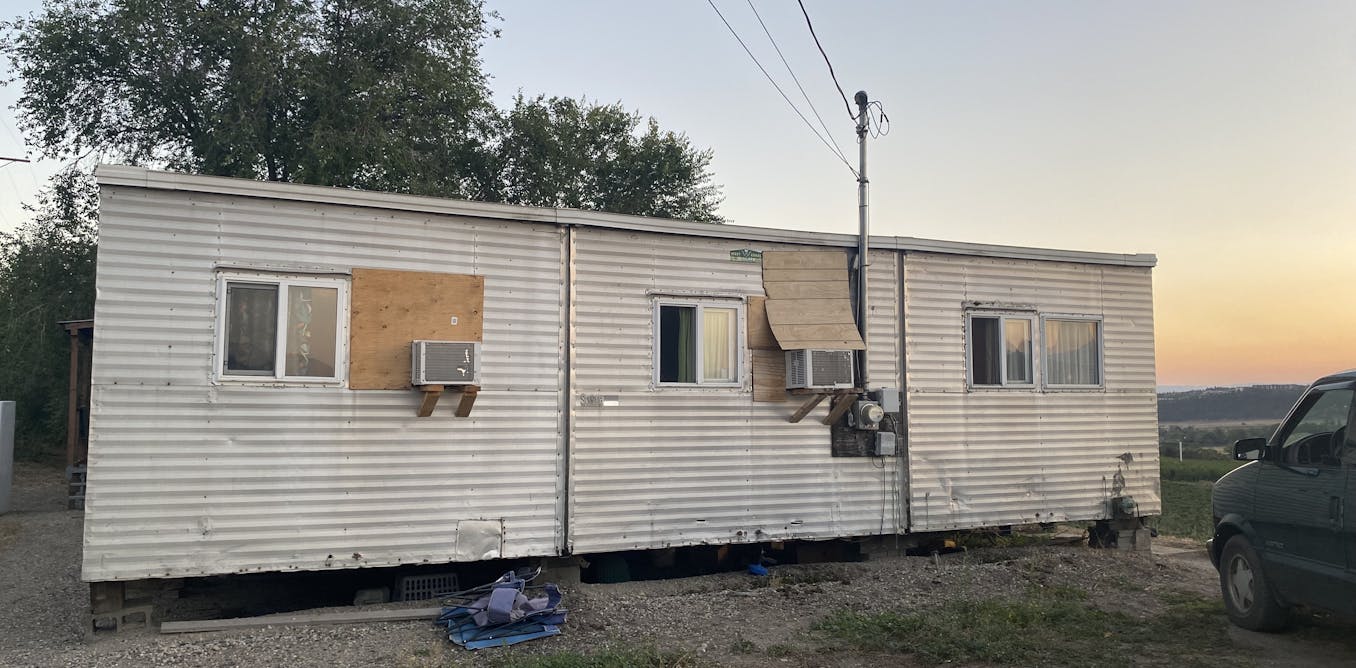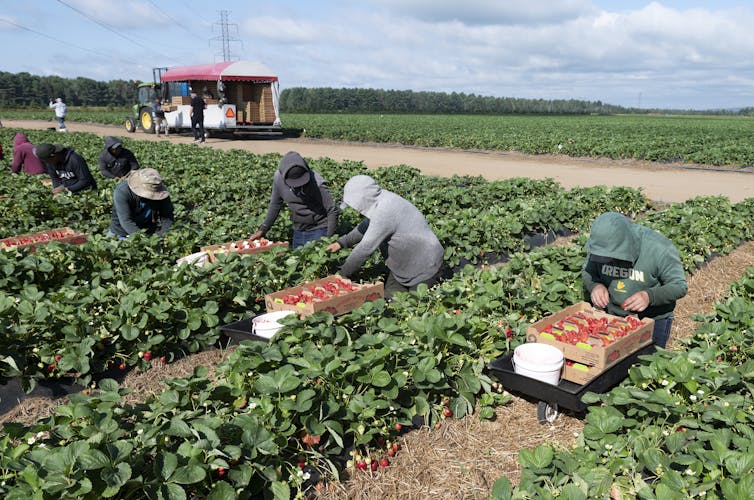
In today’s political climate, temporary migrants in Canada are being scapegoated for everything from rising grocery bills to the affordable housing crisis. Yet migrant workers, particularly farm workers, face a hidden housing crisis that needs urgent attention.
Much of Canada’s ability to produce food hinges on hiring migrant agricultural workers from countries like Mexico, Guatemala, Jamaica and elsewhere. Yet, housing for migrant agricultural workers in Canada is often overcrowded, dangerous and undignified.
Amid government inaction, our group of 29 researchers, clinicians and advocates with the Coalition for National Housing Standards for Migrant Agricultural Workers (CoNaMi), have developed a proposal for national housing standards. This work is backed by clinical experience, hundreds of interviews and surveys and migrant agricultural workers’ own advocacy.
Inadequate housing
When two of us — Anelyse and Susana — interviewed 151 migrants in Ontario and British Columbia as part of our research, workers described conditions of isolation, crowding, inadequate ventilation, poor maintenance and close proximity to hazards such as agrochemicals.
Both during and after the COVID-19 pandemic, many workers struggled to access health care, groceries and social services. In addition, their phone and internet access was often unreliable.
Some workers reported employer-imposed restrictions on leaving the property, and bans on visitors. These living conditions pose serious risks to workers.
Similarly to research led by the Centre for Climate Justice in British Columbia, we also encountered several workers who endured significant hardships as a result of extreme weather events.
Consistent with recent research in Nova Scotia, we found that a lack of meaningful union representation, precarious status and low wages created coercive conditions in which workers felt forced to accept poor living conditions.

(THE CANADIAN PRESS/Jacques Boissinot)
Marginalization and exploitation
As migrant workers typically live on the farms where they work, the lines between work and home can be blurred. This living arrangement often contributes to isolation and surveillance by employers. It may also enable harassment and abuse.
Furthermore, migrants are geographically separated from their families for months or years at a time. Research that Adam has conducted in Atlantic Canada and Ontario, Jill in Québec and Susana in Ontario and British Columbia, outlines how poor housing conditions not only threaten workers’ health and well-being, but also contribute to their marginalization and exploitation.
Workers often describe feeling demeaned and controlled, and they wonder why Canada, a country so willing to accept their labour, is so reluctant to accept their common humanity.
In 2024, the United Nations Special Rapporteur on contemporary forms of slavery has described Canada’s temporary foreign worker program, accessed by migrant agricultural workers to come to Canada, as “a breeding ground for contemporary forms of slavery,” a statement echoed by international human rights watchdog Amnesty International.
Yet the federal government has failed to meaningfully improve housing conditions or establish clear, enforceable and mandatory standards. This inaction persists despite years of reviews, consultations and recommendations.
In fact, a study commissioned by the federal government to review the possibility of a national housing standard for migrant agricultural workers in 2018 called for greater consistency in housing quality assessments.
Academic experts have long called for a national housing standard, as well as proactive and unannounced housing inspections. Other professional and labour organizations have identified the need for greater inter-jurisdictional co-ordination and attention to issues of safety, pandemic preparedness, privacy and dignity.
Furthermore, safeguarding housing quality requires policy changes that provide meaningful status and adequate collective bargaining representation to migrant workers, as these conditions underlie their vulnerability in housing.
In the 2020 Auditor General of Canada report, the need for national minimum accommodation requirements for migrant agricultural workers was identified. However, housing remains a key concern for these workers who have not yet benefited from such proposed recommendations.

THE CANADIAN PRESS/Graham Hughes
National housing standard
A national housing standard for migrant agricultural workers is a crucial step towards protecting their rights and mitigating their vulnerability. These standards must include:
-
Appropriate and enforced housing standards: Ensure robust and proactive enforcement of housing standard. Living quarters must be well-constructed, safe and dignified.
-
Privacy, security, access and freedom: Guarantee workers’ rights to privacy, movement, access to health and social services and freedom from surveillance. Workers must have access to transportation and be able to enjoy rest, leisure and a social life.
-
Dignified living conditions: Safeguard basic rights to comfort, storage and personal care by prescribing minimum standards and ratios for private bedrooms, common areas, laundry and cooking facilities. Workers should have private bedrooms and reliable internet access.
-
Health and safety in housing: Protect workers from the spread of illness, extreme weather events and other hazards through proper air conditioning, ventilation and reduced occupancy ratios for bathrooms and kitchens.
-
Co-ordinated government leadership: Prevent different jurisdictions passing the buck by mandating co-ordination, data-sharing and training among federal, provincial and municipal governments. For example, inspectors should be trauma-informed and armed with strategies to mitigate implicit bias and to anticipate barriers this group faces because of their precarious status. The federal government must lead with adequate funding and policy reform to address barriers that prevent workers from advocating for decent housing.
The evidence is clear. Canadian governments must raise the bar from the floor, and create national standards for migrant agricultural workers’ housing.
link




/sexual-and-reproductive-health-and-research-(srh)/translation-room-at-the-world-health-organization.tmb-1200v.jpg?sfvrsn=6a145bd9_1)
